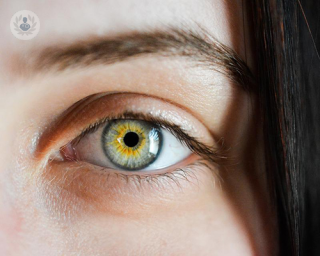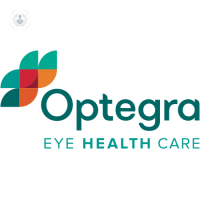SMILE laser surgery
What is SMILE laser eye surgery?
SMILE laser eye surgery is a relatively new technique that can be used to fix shortsightedness (nearsightedness) and blurry vision (astigmatism). 'SMILE' stands for Small Incision Lenticule Extraction and is a femtosecond laser-assisted refractive procedure.
The procedure corrects vision through the minimum section of the cornea without the need to cut the corneal flap, and uses only one laser for both the section and correction itself.

What happens during SMILE laser eye surgery?
During the procedure, the laser creates a small lens-shaped lenticule (tissue) within the cornea. After this, the laser makes another incision on the surface of the cornea, through which the lenticule is extracted and discarded. As the lenticule has been removed, the cornea has been reshaped, correcting the patient's shortsightedness.
There are certain requirements to qualify for this procedure, which would be discussed in depth with your ophthalmologist.
What happens during recovery?
After surgery, you may feel tired and dizzy. You will not feel pain in your eye until the local anaesthetic has worn off. Once it has, you will likely feel a dull pain and the need to itch the eye, but it is very important not to do so. During the first eight to 10 hours, you will not be able to see much out of the treated eye and vision will be cloudy and blurry. You will be given some eye drops to help your eye heal during recovery. After this period, your vision will return to normal.
The incisions heal in a matter of days and no stitches are required. It is recommended to avoid wearing make-up as to avoid causing irritation to the eye during the healing process. There is also no swimming or heavy lifting for up to six weeks after the procedure. After the first month of recovery, you should be symptom-free.
What are the advantages of SMILE over other laser eye surgeries?
The biggest advantage of the SMILE laser eye procedure is that it induces less dry eyes in comparison to LASIK surgery, as the incision is much smaller (30 degree in comparison to 270 degree) and there is no flap induced. Also, the SMILE procedure maintains the strength of the cornea better than other laser eye surgeries. The procedure is more attractive to patients who have an active lifestyle, as there is no flap to be dislodged in case of trauma, like in the case of contact sport.
In SMILE laser eye surgery, there is no flap cutting, which minimises the induction of spherical aberration and eliminates the incidence of striae.
Are people who suffer from farsightedness elegible for SMILE laser eye surgery?
While patients with nearsightedness and astigmatism can be treated by SMILE laser eye surgery, research and clinical trials are currently being carried out to see whether or not patients suffering from farsightedness can eventually be considered suitable for SMILE laser eye surgery.
Is SMILE laser eye surgery painful?
Fortunately for patients, SMILE laser eye surgery is normally a pain-free procedure.
How long do the results/effects last?
Laser eye surgery is usually permanent, but if your prescription changes in the future, you may need to wear glasses or contact lenses, or consider an enhancement surgery.
What are the associated risks?
There are, unfortunately, quite a number of potential risks associated with SMILE laser eye surgery. These include:
- night vision difficulty
- clouded vision
- double vision
- dry eye syndrome
- corneal ectasia
- infection
- flap-related complications












